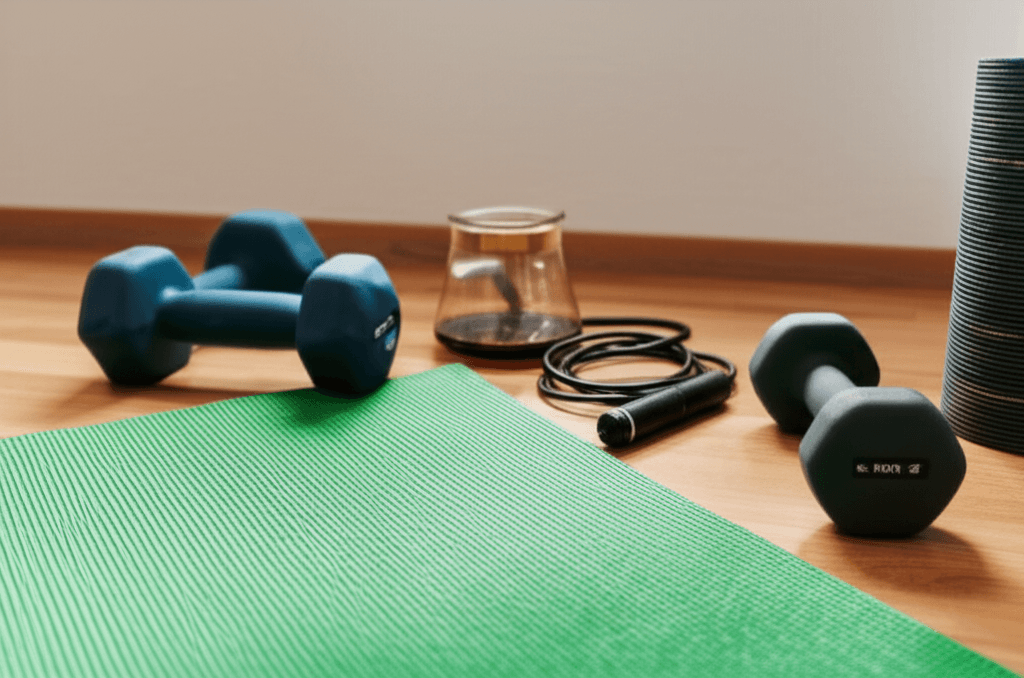Sticking to an exercise routine can be challenging, but a personalized approach can make all the difference. Instead of dreading your workouts, imagine a fitness plan that aligns with your life, keeps you motivated, and delivers lasting results. This guide will help you create a sustainable exercise routine tailored to your unique needs and goals.

The Pillars of a Well-Rounded Exercise Routine
A truly effective exercise routine isn’t just about moving your body; it’s about incorporating various elements to promote holistic health and prevent imbalances. A well-rounded fitness plan typically includes five key components: cardiovascular endurance, muscular strength, muscular endurance, flexibility, and body composition.
Cardiovascular Endurance
Cardiovascular (or aerobic) exercise strengthens your heart and lungs, improving their efficiency in delivering oxygen throughout your body. This makes everyday physical tasks easier and boosts overall endurance.
Examples of aerobic activities include:
- Running or jogging
- Walking
- Swimming
- Cycling
- Dancing or Zumba
- Hiking
- Team sports like basketball or soccer
Aim for at least 30 minutes of cardio several times a week.
Muscular Strength and Endurance
Strength training builds muscle and bone mass, which helps support your joints and can prevent injuries. Muscle also burns more energy than fat, even at rest. Muscular endurance is the ability of your muscles to perform repeated movements over time.
Effective strength training exercises often involve using weights, resistance bands, or your own body weight.
Common exercises include:
- Push-ups
- Pull-ups
- Planks
- Squats
- Lunges
- Deadlifts
- Bench presses
Beginners can start with 8-10 exercises targeting major muscle groups two to three times a week.
Flexibility
Maintaining flexibility is crucial for avoiding injury, especially as you age, and allows for easier, more free movement without stiffness. Activities that improve flexibility include stretching (before and after exercise), yoga, Pilates, and dance.
Body Composition
While not an exercise type itself, body composition refers to the ratio of fat mass to fat-free mass in your body. By consistently engaging in cardio, strength training, and flexibility work, you actively develop muscle mass and reduce fat mass, thereby improving your body composition.

Designing Your Personalized Workout Plan
One size does not fit all when it comes to exercise. A customized exercise plan considers your age, gender, past injuries, current health, schedule, and specific goals. This personalized approach leads to better results, increased adherence, and a reduced risk of overtraining or injury.
1. Set SMART Goals
Vague goals like “get in shape” can be discouraging. Instead, use the SMART framework: Specific, Measurable, Attainable, Relevant, and Time-bound.
- Specific: Clearly define what you want to achieve. For example, “run a 5K in under 30 minutes” instead of “run more.”
- Measurable: Set concrete metrics to track your progress. This could involve tracking workout duration, distance, weight lifted, or repetitions.
- Attainable: Your goal should be challenging but realistic. Aiming to lose 20 pounds in a month, for instance, is often unrealistic. Healthy fat loss typically ranges from 1 to 2 pounds per week.
- Relevant: Ensure your goal aligns with your overall lifestyle and long-term well-being. If you dislike running, consider cycling or swimming.
- Time-bound: Set a clear deadline for your goal.
Break larger goals into smaller, monthly or weekly targets to maintain motivation.
2. Start Slow and Listen to Your Body
If you’re new to exercise or returning after a break, begin with a low intensity and gradually increase frequency and intensity as you get stronger. Doing too much too soon can lead to injury and burnout. Pay attention to pain; if you feel it, stop and rest. Your starting point, age, and training proficiency all influence how quickly you can progress.
3. Choose Activities You Enjoy
You are more likely to stick with an exercise plan if you find activities you genuinely enjoy. Explore different options like dancing, swimming, hiking, rock climbing, yoga, or team sports. Mixing up your routine also prevents boredom and targets different muscle groups, helping to prevent overuse injuries.
4. Schedule Your Workouts
Treat your workouts like important appointments and add them to your calendar. Consistency is key to forming an exercise habit. Even short, regular workouts (e.g., three 10-minute sessions) can be as effective as longer ones, making it easier to fit exercise into a busy schedule.
5. Incorporate Progressive Overload
To continue seeing results, your body needs to be continually challenged. Progressive overload means gradually increasing the intensity, duration, or complexity of your workouts over time. This can involve:
- Increasing the weight or resistance
- Performing more repetitions or sets
- Decreasing rest time between sets
- Increasing the frequency of workouts
- Slowing the tempo of movements
- Trying more challenging variations of an exercise
Progression should be small and incremental to avoid injury. For beginners, progression might happen every two to three weeks.
6. Prioritize Rest and Recovery
Rest days are just as important as active days. During recovery, your muscles repair and strengthen themselves, which is crucial for muscle growth and preventing injury. Without adequate rest, you risk fatigue, reduced performance, and overtraining.
Rest and recovery can include:
- Scheduled rest days where you take a break from intense exercise.
- Active recovery, which involves low-intensity activities like walking, gentle yoga, or stretching to promote blood flow and reduce soreness.
- Prioritizing sleep, as growth hormone levels peak during sleep, aiding muscle repair.
- Proper nutrition and hydration.
7. Track Your Progress and Celebrate Milestones
Keeping a fitness journal or using a fitness app to record your workouts can be a powerful motivator. Seeing your consistency and improvements can build momentum and confidence. Reward yourself when you reach milestones, no matter how small. This positive reinforcement can help you stay committed to your fitness journey.

Staying Motivated and Overcoming Challenges
- Find an Accountability Partner: Working out with a friend can make exercise more enjoyable and keep you accountable.
- Mix It Up: If boredom sets in, try a new activity or change your environment. Group fitness classes can also introduce you to new movements and provide guidance.
- Focus on How You Feel: Shift your focus from external changes (like weight) to how exercise makes you feel—more energized, less stressed, or improved mental clarity. Exercise offers numerous benefits beyond physical appearance, including reduced risk of heart disease, improved blood sugar management, and better sleep.
- Be Patient and Positive: Results take time. Don’t be too hard on yourself if you miss a workout or if progress isn’t as fast as you hoped. Consistency over time is what truly delivers results.
By thoughtfully designing a personalized exercise routine that incorporates these principles, you can create a sustainable path to achieving your fitness goals and embracing a healthier, more active lifestyle.







